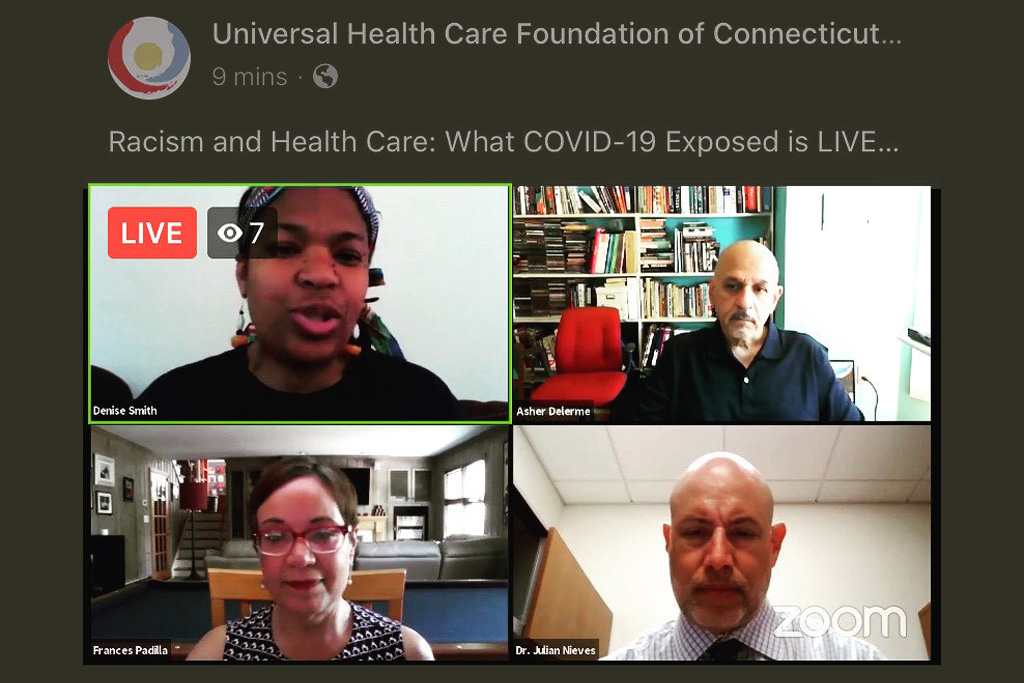Assessing Healthcare Affordability in Connecticut
February 28, 2020
Executive Director, Connecticut Office of Health Strategy

According to a survey conducted by Altarum Healthcare Value Hub on behalf of the Universal Health Care Foundation of Connecticut, 62% of adults in Connecticut are worried about not being able to afford healthcare insurance in the future and 23% actually avoided a medical visit or procedure because they could not afford the cost. Their worries are based in fact because healthcare costs are rising much faster than wages: Over the past 15 years, families saw the cost of healthcare rise by 77% while median wages only went up by 21%.
This rate of cost growth is unsustainable for everyone in Connecticut. Because of these increasing costs, the average family spends the same amount of money on their health insurance coverage in one year as the cost of a compact car. If food costs were rising as fast as healthcare costs, a dozen eggs would cost $100!
In order to fix such a systemic problem, we need to measure it and zero in on who is most affected. That is why the Office of Health Strategy (OHS) and the Office of the State Comptroller, supported by the Connecticut Health Foundation and the Universal Health Care Foundation of Connecticut, are working together to create a Healthcare Affordability Standard and modeling tool.
We define healthcare as affordable in Connecticut if a family can reliably secure it to maintain good health and treat illnesses and injuries when they occur without sacrificing the ability to meet all other basic needs including housing, food, transportation, child care, taxes and personal expenses or without sinking into debilitating debt.
What does it take to meet a family’s basic needs in Connecticut? According to the 2019 Self-Sufficiency Standard, it takes a family consisting of one parent, a pre-school child and a school-age child who live in New Britain as much as $64,609 a year to pay just their basic expenses. That means the parent needs to earn a little more than $30 an hour. A single adult, living alone in Hartford needs to earn $22,398 a year and an adult in Hartford with one young child needs to earn $51,120¹. (These calculations include an assumption that adults are working and have employer-sponsored health insurance. The new Healthcare Affordability modeling tool, described below, will allow us to test more variables that affect healthcare costs.)
In Connecticut, nearly one in four (23%) households with working age adults do not have adequate income to meet their basic needs. Households maintained by single mothers, particularly if they are women of color, have the highest rates of income inadequacy – as many as 63% of all single mothers and 75% of single mothers of color have inadequate incomes.
With the new Healthcare Affordability Standard and modeling tool, developed by researchers at the University of Washington School of Social Work and UCONN Analytics and Information Management Solutions (AIMS), we will project the costs of healthcare to sample households with different types of insurance coverage, and then calculate how these costs affect their ability to meet their basic expenses. For example: How much does a Hartford family with two adults and two children need to earn in order to pay for healthcare if they have employer-sponsored insurance? And how many families in Hartford earn enough to pay those costs and also meet their other basic expenses?
As we measure affordability, we also need to slow the growth in costs. Under a new Executive Order issued by Gov. Lamont, OHS will develop cost growth benchmarks based on total healthcare expenditures from public and private sources. We will receive reports from providers and payers in order to monitor rising costs and make them transparent. The goal is to keep cost growth in line with a reasonable benchmark while also making sure that quality, patient safety and spending on primary care are maintained and, in the case of primary care, increased.
At OHS, our mission is to use data to shape comprehensive and effective policies that promote equal access to high-quality healthcare, control costs, and ensure better health outcomes for the people of Connecticut. When all families can afford reliable high-quality care, it’s good for them, good for our economy and good for our state.
¹ Calculations of the income needed to meet basic needs for over 700 family types living in every one of Connecticut’s cities and towns are available in the 2019 CT Self-Sufficiency Standard report.
Back Issues

Developing a Research Agenda on High-Value, Equitable Care: The Power of Being Practical, Inclusive, and Innovative

The Room Where Research Happens: How I Became Part of a Group that Was Open to Research the Topic that Few Seemed Willing to Discuss












